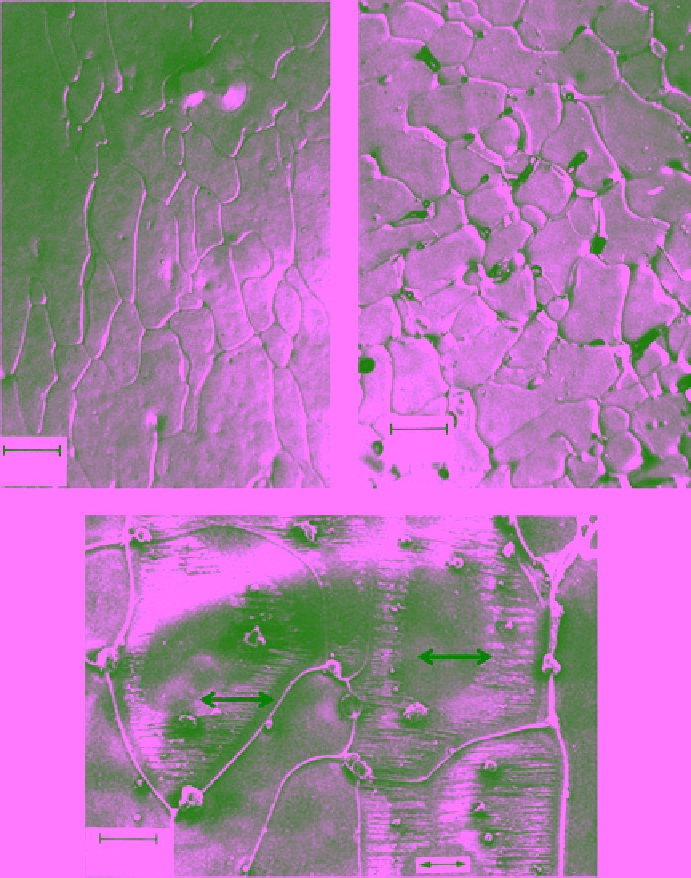Geology Reference
In-Depth Information
(a)
(b)
1 mm
1 mm
(c)
< C >
< C >
200
μ
m
Figure 4.30
Optical micrograph of thermally etched ice surfaces showing grain boundaries in (a) vertical and
(b) horizontal cross sections of frazil crystals, and scanning electron micrograph (SEM) of a replica of chemically
etched vertical section exhibiting brine pockets, crystal boundaries and dislocation etch pits elongated along the
c
axis indicated by the arrow (c) [
Sinha,
1986].
of the gray ice shown in Figure 4.31b is a manifestation
of the presence of pancake ice with raised edges that has
grown under intensive turbulent oceanic conditions. This
ice field is an example of the agglomerate ice (R type)
exemplified earlier in Figure 4.21. Photograph of the
surface cut through the middle of 80 mm thick section of
a 100 mm diameter ice core reveals four distinctive layers,
as shown by the broken lines in Figure 4.31c. These layers
can be identified clearly in the corresponding vertical thin
section under polarized light in Figure 4.31d. The top
layer was probably formed from refrozen snowmelt with
irregular crystalline structure. The second layer features
crystals that grew horizontally (
c
axis vertical) and also a
continuation of the irregular crystals. Columnar crystals
are visible in the third layer. The third layer is probably
the first layer that was formed under relatively calm water
before snow accumulated, melted, and refroze on the top
of the existing ice. The bottom layer of the ice exhibits
an interruption in the columnar growth with accretion
of finer frazil crystals.
4.4.2. First‐Year Ice, FY (
Siku
)
First-year ice (
siku
in Inuktitut) features diverse
internal polycrystalline structure, especially in its upper
layer, which may often extend to a few centimeters and

